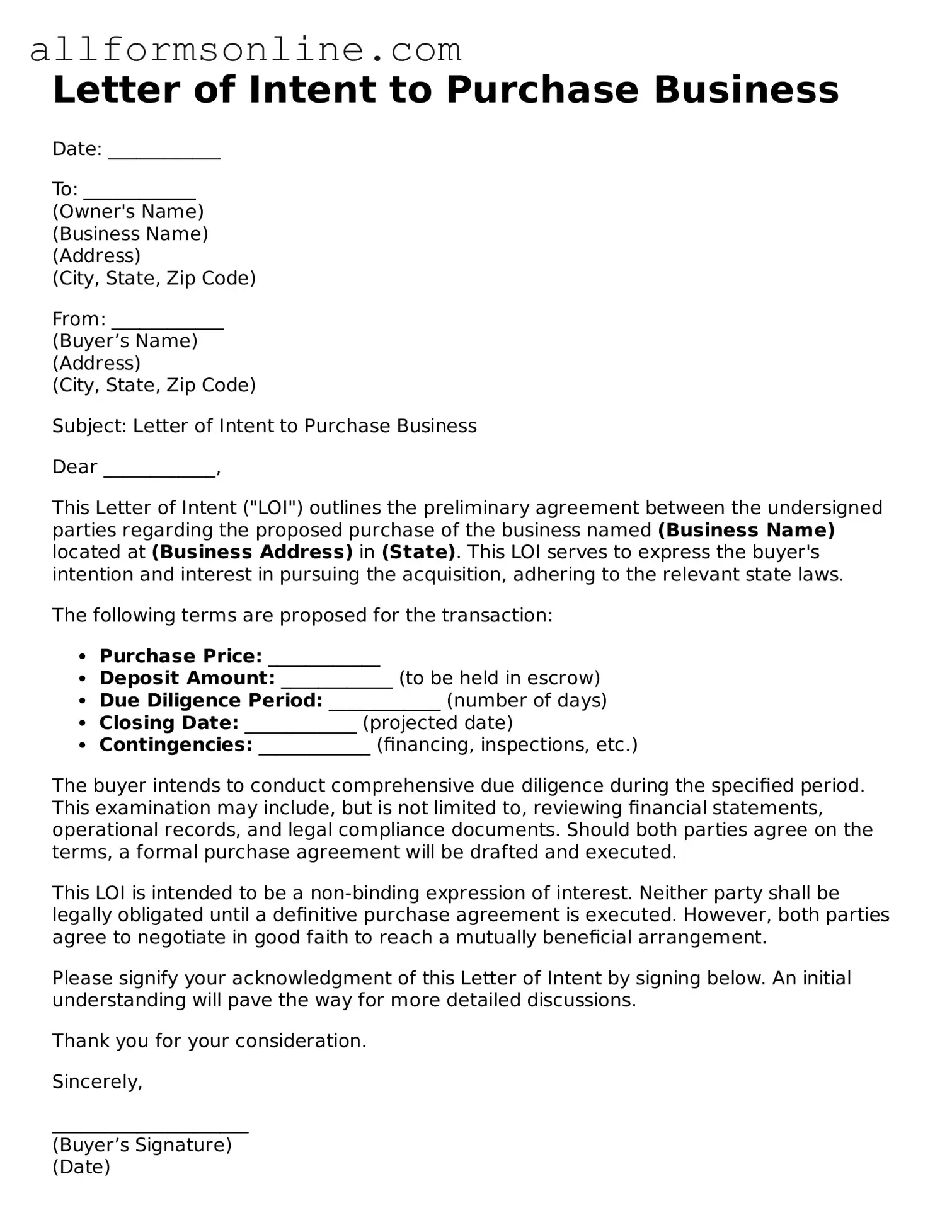What is a Letter of Intent to Purchase Business?
A Letter of Intent (LOI) to Purchase Business is a document that outlines the preliminary agreement between a buyer and a seller regarding the sale of a business. It expresses the buyer's interest in purchasing the business and sets the stage for further negotiations. While it is not a legally binding contract, it signals serious intent and lays out key terms that both parties are willing to discuss.
Why is an LOI important in a business transaction?
An LOI serves several important purposes. First, it clarifies the intentions of both the buyer and seller, helping to avoid misunderstandings. Second, it provides a framework for the negotiation process, outlining essential terms such as price, payment structure, and timelines. Lastly, it can also help secure financing, as lenders often want to see a formal agreement before providing funds.
What key elements should be included in the LOI?
While the specifics can vary, a well-crafted LOI typically includes the purchase price, payment terms, a description of the business being sold, any contingencies (like financing or inspections), and a timeline for the transaction. Additionally, it may address confidentiality and exclusivity agreements, ensuring that both parties are protected during negotiations.
Is an LOI legally binding?
Generally, an LOI is not legally binding in its entirety. However, certain sections, such as confidentiality or exclusivity clauses, may be enforceable. It's essential to clearly indicate which parts of the LOI are binding and which are not. This clarity helps both parties understand their rights and obligations as they move forward.
How does an LOI differ from a purchase agreement?
An LOI is a preliminary document that outlines the basic terms of a potential sale, while a purchase agreement is a comprehensive contract that finalizes the sale. The purchase agreement includes detailed provisions, representations, warranties, and obligations of both parties. Essentially, the LOI is a starting point that leads to the more formal purchase agreement.
Can I change the terms of the LOI after it has been signed?
Yes, the terms of an LOI can be modified after it has been signed, but both parties must agree to any changes. Open communication is key. If you find that certain terms need adjustment, it’s best to discuss these changes as soon as possible to avoid complications later in the process.
Should I hire a lawyer to help with the LOI?
While it’s not mandatory to hire a lawyer for drafting an LOI, it is highly advisable. An experienced attorney can help ensure that the document accurately reflects your intentions and protects your interests. They can also guide you through the negotiation process and assist with any legal implications that may arise.
What happens after the LOI is signed?
Once the LOI is signed, both parties typically move forward with due diligence, where the buyer investigates the business's financials, operations, and legal standing. This process can take time and may lead to further negotiations. If everything checks out, the parties will then work towards drafting a formal purchase agreement to finalize the sale.
